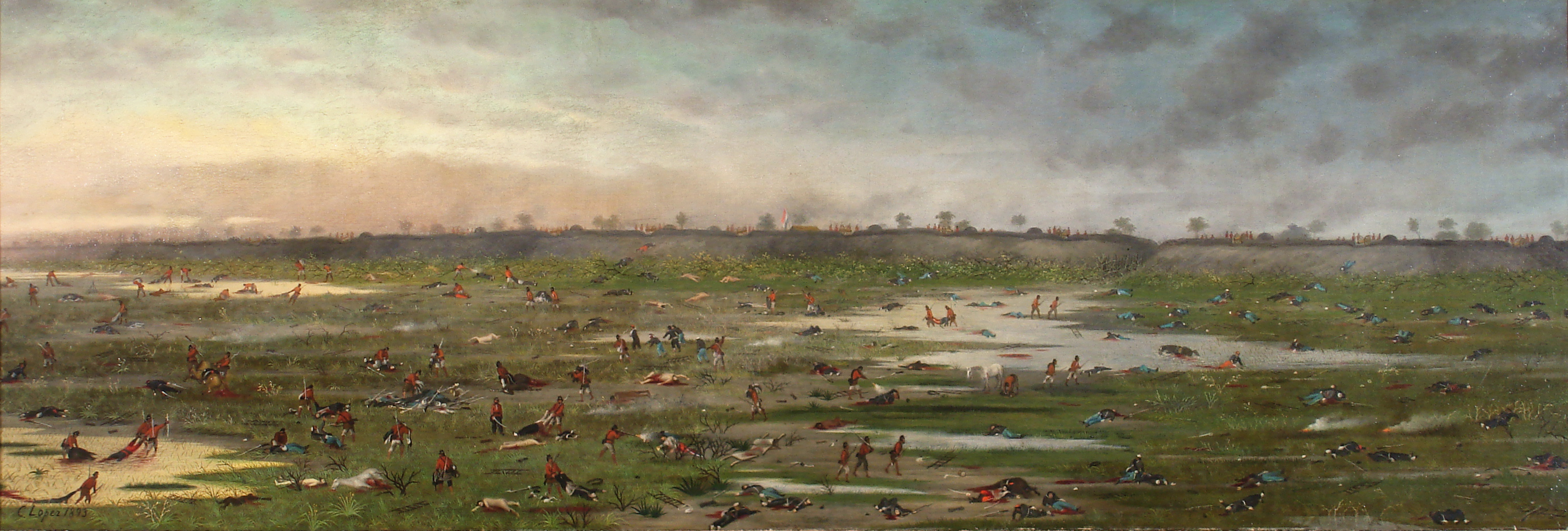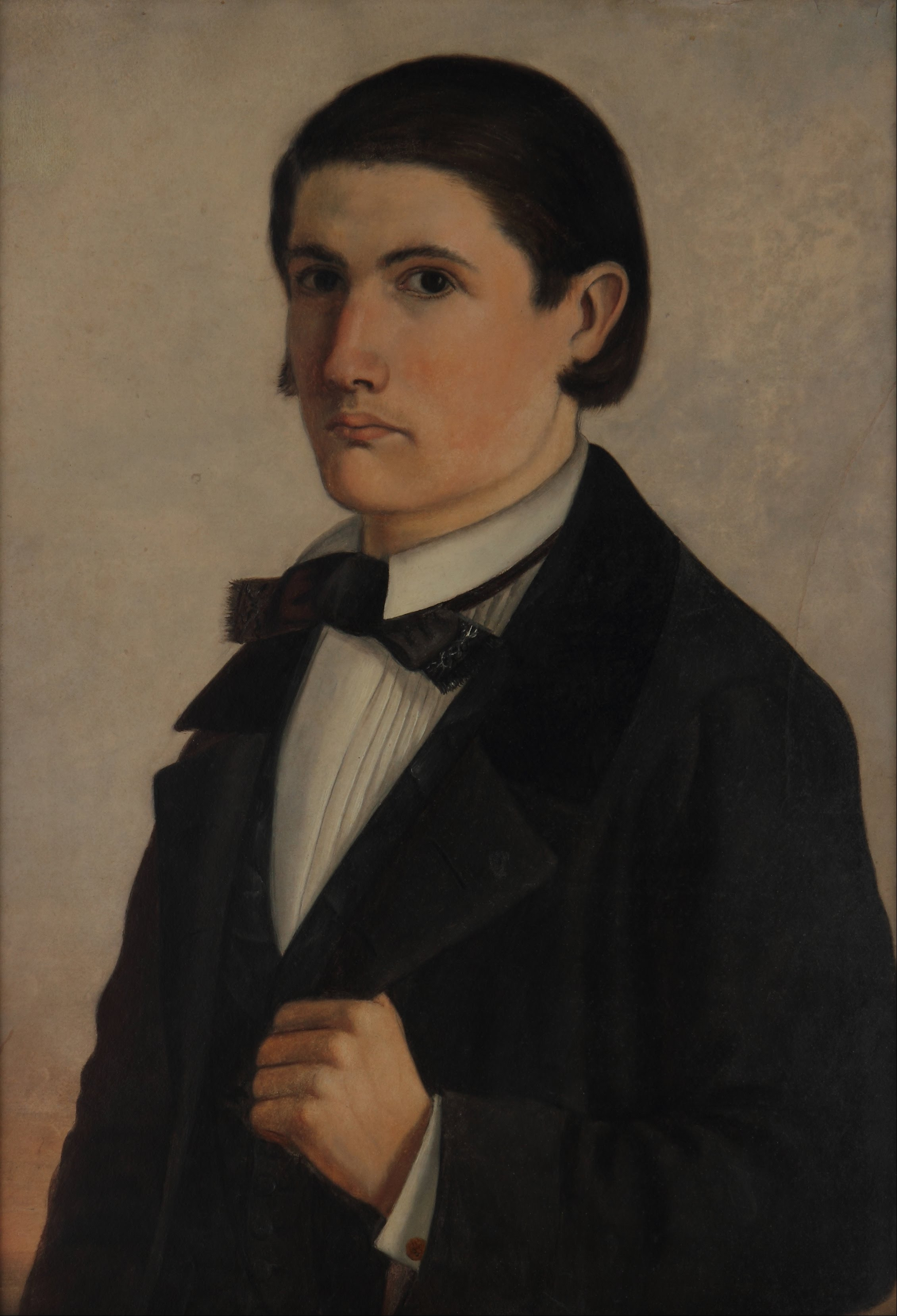Cándido López represented the Paraguayan War (1865–1870)—in which he fought until wounded at Curupaytí—by way of descriptive-analytic paintings derived from European military cartographic representations of different battles.
López’s lack of professional training (he was a photographer, soldier, shoemaker, and rural worker) in an era of artists brought him closer to a past of regional traditions, when art was a task that was also undertaken by craftsmen, soldiers, typographers, and calligraphers. López certainly had acquired a cursory pictorial background formation in Buenos Aires during the 1850s and given that he was unable to pursue his desire for further education and gain insertion as an artist, photography in military campaign settlements served as a viable commercial option.
On the morning of September 22, 1866, the joint force of Brazilian, Argentine, and Uruguayan armies attacked Paraguayan fortified trenches on Curupaytí. The Paraguayans were led by General José E. Díaz. This position was held by 5,000 men and 49 cannons, some of them in hidden places out of the attackers' view. The Brazilian Navy gave support to the 20,000 assailants, but the ships had to keep some distance from the guns at the fortress of Humaitá, which led to the lack of accuracy and impact of the ship's fire.
The Paraguayans were also successful in misleading their foes: a trench drew most of the Brazilian fire, but the Paraguayan troops were located elsewhere. Around 20 percent of the almost 20,000 allied (Brazilian and Argentine) troops involved in the attack were lost; Paraguay lost less than a hundred men. Paraguay's biggest success in the ultimately disastrous war was limited because its military leader Francisco Solano López did not counterattack the defeated Allies; not even a general as celebrated as Díaz would attack without López's orders. Ultimately, the battle of Curupaytí was merely a side note and temporary success in what would eventually become a near-extermination of the Paraguayan people.
P.S. A war is a disaster touching all aspects of human life, including art. Here you can read about five artists who had to become soldiers and here's how the outbreak of the WWI influenced art.


 Cándido López
Cándido López